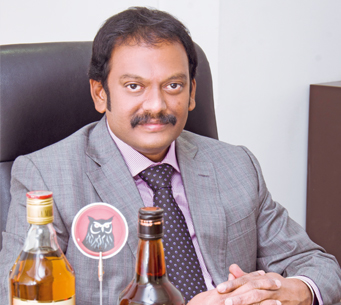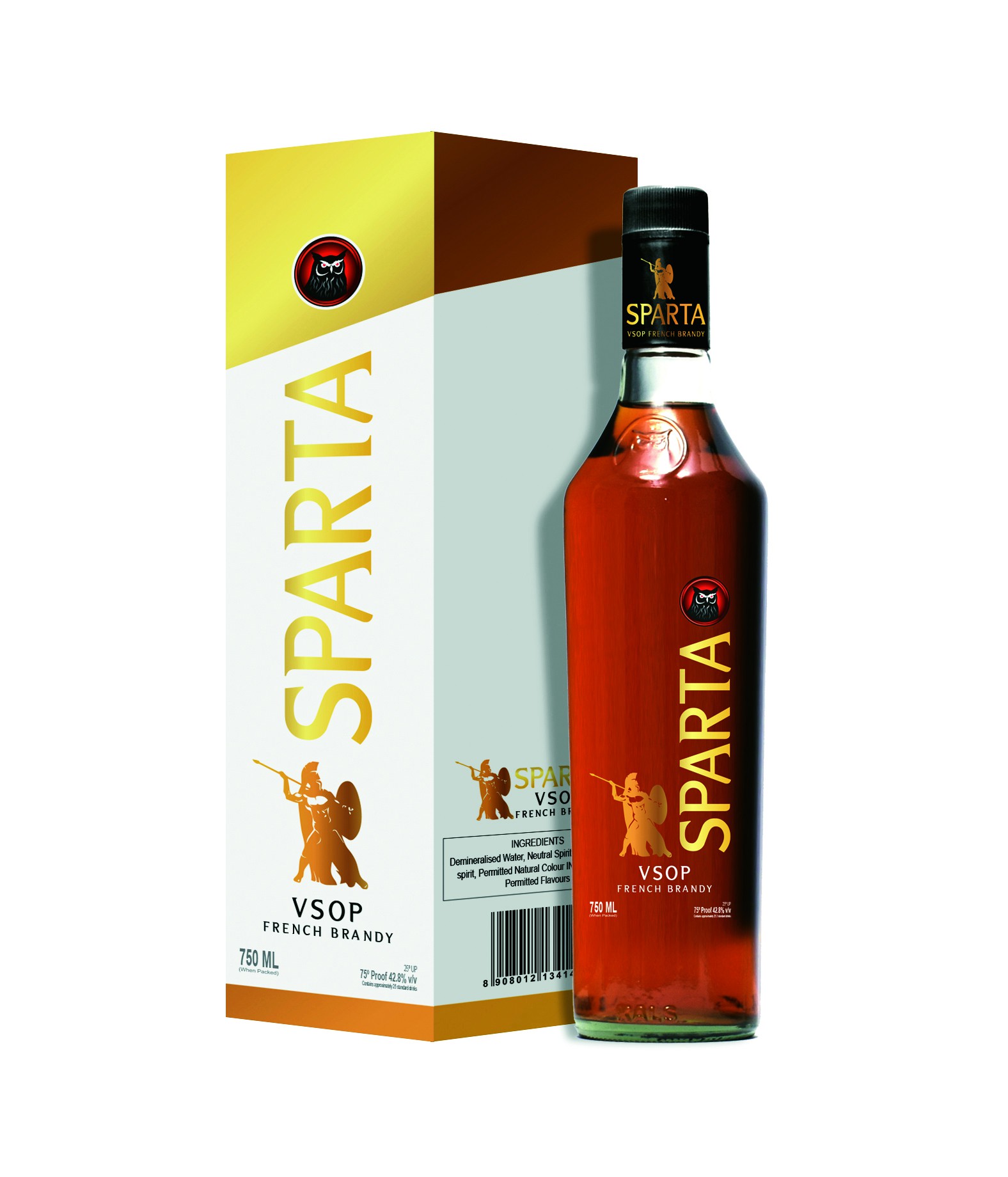
Marrying ethanol with petrol the need of the hour
What is the current situation of ethanol production in India?
The production of ethanol for mixing with petrol was introduced in the country during the year 2006-07. Ethanol is an important bio-fuel and is blended with petrol under EBP programme. It is an important component of national bio fuels programme. Ethanol is a source of energy which is indigenous, non polluting and virtually inexhaustible.Therefore to promote this bio fuel, the govt. has scaled up the blending targets which are given below:-
Production of Surplus grains declared (2018-19)
S.No. Products Qty ( Lac Tonnes)
1 Maize 30-40
2 Bajra 9.00
3 Jawar 4.70
The initial aim was to mix 5% ethanol with petrol by the season 2016-17. However, to promote bio fuel the govt. scaled up the blending targets from 5% to 10% to be achieved by the season 2021-22 under Ethanol Blended with Petrol Programme (EBP). However, due to various reasons implementation of this programme was not seriously taken up till the year 2017 when the govt. notified the programme. But with all the efforts of the govt. and the distillery industry producing ethanol from molasses 5% blending could not be achieved even till the year 2016-17, However, during the current year 2018-19 (closing 30th Nov. 2018) total blending of approx. 6.2% has already been achieved. This also included the ethanol produced from grains “not fit for human consumption” to supplement the ethanol supplies.
The entire ethanol game plan envisaged by the govt. Can be explained in nutshell as below:
Centre has set a target of 10% ethanol blending by petrol by 2022, leading to forex savings of `12,000 crores a year.
There was 3.5% blending in 2016-17 sugar season and 4.0% in 2015-16.
Nationwide average for ethanol blending stood at 4.02% as on Oct.1
The latest proposal will allow ethanol production from surplus quantities of maize, jawar and bajra, as well as other feedstock such as fruit and vegetable wastes.
Ethanol blending in petrol has risen from 38 crore litres in supply year 2013-14 to an estimated 146 crore litres in 2017-18.
What are the incentives being given by the government to ramp up the production given the increasing ethanol requirements in India?
The Govt. first introduced financial assistance scheme by extending financial assistance through spot loans to sugar mill attached distilleries to set up plant and machinery for production and enhancement of ethanol production capacities in the country. Many distilleries attached to sugar mills applied for and received the financial assistance form the Ministry of Consumer Affairs, Food & Distribution, GOI enabling them to put up distilleries and ethanol production equipment. The financial scheme included facility of interest subvention @ 6% per annum or 50% of rate of interest charged by banks, whichever is lower with certain conditions.
In order to augment ethanol production capacity and thereby also allow diversion of sugar for production of ethanol, in principal approval has been granted for extension of soft loan of `6139 crores though banks to the mills for setting up new distilleries /expansion of existing distilleries and installation of incineration boilers or installation of any method as approved by Central Pollution Control Board for Zero Liquid Discharge for which Government will bear interest subvention of `1332 crore. About 114 sugar mills are likely to be benefitted as a result of this measure and ethanol production capacity of sugar mills in the country is likely to be enhanced by about 200 crore litres per annum in the coming three years.
The Govt. has notified a new scheme on 08.03.2019 for extending financial assistance to sugar mills for enhancement and augmentation of ethanol production capacity. Under the scheme Govt. would bear `2,790 core towards interest subvention for extending indicative loan amount of `12,900 crore by banks to the sugar mills for augmentation of ethanol producing capacity.
The Govt. has notified a scheme on 08.03.2019 for extending financial assistance to molasses based stand-alone distilleries. Under the scheme, Govt. would bear `565 cores towards interest subvention for extending indicative loan amount of `2600 crore by banks to the molasses based stand-alone distilleries to augment their ethanol production capacity.
On further request from distillery industry and All India Distillers’ Association (AIDA), govt. has also agreed to consider financial assistance on the same condition to grain based distilleries for producing ethanol. Many distilleries have already applied. In the meantime loans have been sanctioned as far as molasses based distilleries are concerned. The scheme for loans to grain based distilleries is also under consideration of the govt. This step will provide further possible resources towards increasing the production of ethanol under EBP Programme.
What are the current requirements of ethanol and are there any deficit and how are they bridging it?
The current requirement as per the programme of introducing 10% blending by the year 2022 requires approximately 300 crore ltrs. of ethanol. The govt. has announced various incentives and financial assistance to the industry. It is hoped by the closing of the year 2019-20 when new distilleries would have gone up including increase in existing production capacities in the existing units due to the positive steps taken by the govt., the 10% blending will be achieved by the year 2020- 21/22.
The prices announced for Ethanol for supply year 2019-20 (1st Dec. 2019 – 30 Nov. 2020) are:
S.No. Products Price (Rs.) / BL
1 “C” Heavy Molasses 43.75
2 “B” Heavy Molasses 54.27
3 Sugarcane Juice 59.48 + GST & Transportation charges
The revision of prices of ethanol supplied from grains is also under consideration by the govt. in consultation with the distillery industry
In addition the govt. has also taken steps in consultation with the industry to set up and revise the prices of ethanol from time to time so that the industry feels protected about the production and supply of ethanol. A very recent price increase has been introduced by the govt. 01.01.2019, which now will bring the price of ethanol from various sources to the level given below w.e.f. 01/12/2019.
The revision of prices of ethanol supplied from grains is also under consideration by the govt. in consultation with the distillery industry.
The govt. of India very rightly announced use of surplus grains in addition to the spoilt and damaged grains for production of ethanol. The govt. has declared following surplus grains under this policy which could be used for production of ethanol for the year 2018-19. It will be further increased and announced from time to time by the govt. in consultation with the concerned departments. The present quantities of availability of surplus grains in the country which could be used by distilleries for production of ethanol are as below:
Will the petroleum companies be able to absorb the new price increase?
The setting up of prices are being announced by the govt. of India in consultation with the petroleum companies and it has been agreed that the prices have to be revised from time to time if the need be, to ensure continuous supply of ethanol and to increase its production as much as possible. The petroleum companies are part of the final prices of ethanol, calculated and announced by the govt.
What is the current requirements of ENA in the liquor industry ? Is there sufficient production to meet the needs of the industry?
Current requirement of ethanol as well as ENA depends upon the production and availability of raw materials for the basic production of Rectified Spirit (R.S)from which ENA and / or ethanol is produced. As per the present scenario the supply of ENA for liquors is being carried out by the industry alongwith supplies of ethanol. However, the market now competitive and has to be kept in mind for prices of liquor which are controlled by the state govts. Considering the market price of the ENA vis-a-vis that of Ethanol, it should be fair to the liquor industry as well.
A good quantity of grain spirit being produced is also in the market now and there sufficient quantity is available both for ENA and Ethanol as per the programme set up by the govt. However, it vastly depends upon competitive pricing and balanced affordability.
What incentives is the government giving for ENA production, both for domestic consumption as well as for exports?
The procurement and supply of ENA for potable purposes comes under the ambit of state govts. and the state govts. have to ensure good prices for IMFL for continuous availability of ENA in the competitive market of alcohol production in the field. The Central Govt. has no role for fixation or revising liquor rates and prices in the market, which is under the govts. of respective states.
What are the alternative feedstocks government is looking at for ethanol production besides traditional molasses and grain? And what are the challenges we have for the same?
The govt. of India has been on the look out for many alternatives, sources and resources for finding out alternative feed stocks for production of Ethanol. The govt. has already considered all feed stocks which are possibly available like agricultural wastes, forest wastes, bagasse, bamboo miscellaneous millets etc. and the research in this regard is continuously being undertaken for selecting and finalising the new feed stocks for production of ethanol.
There is an option under the research programme which will continue for searching out various resources of feed stocks and resources from all fields will be studied provided they are reasonably affordable and competitive with other feedstocks.
Will electric vehicles disrupt the demand for petrol and as a result the demand for ethanol?
No, in the near foreseeable future there is no possible disruption of demand for petrol or ethanol as a result of introducing electric vehicle in the country. The demand for petrol is rather expected to increase rapidly as the number of motor vehicles on the road is increasing by the day.

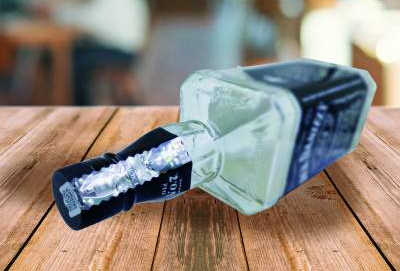
 Excise Duty which is an important source of revenue is continually under threat from the practise of illicit trade. Considerable amount of money which could be used to benefit the government services of a country are being diverted to the pockets of criminals participating in illegal trading. However, more than loss of tax revenue, it could costs Government loss of image/goodwill. The hooch tragedies occur due to illicit liquor consumption eroded the image of state governments which create challenge for state government to ensure consumer confidence.
Excise Duty which is an important source of revenue is continually under threat from the practise of illicit trade. Considerable amount of money which could be used to benefit the government services of a country are being diverted to the pockets of criminals participating in illegal trading. However, more than loss of tax revenue, it could costs Government loss of image/goodwill. The hooch tragedies occur due to illicit liquor consumption eroded the image of state governments which create challenge for state government to ensure consumer confidence.
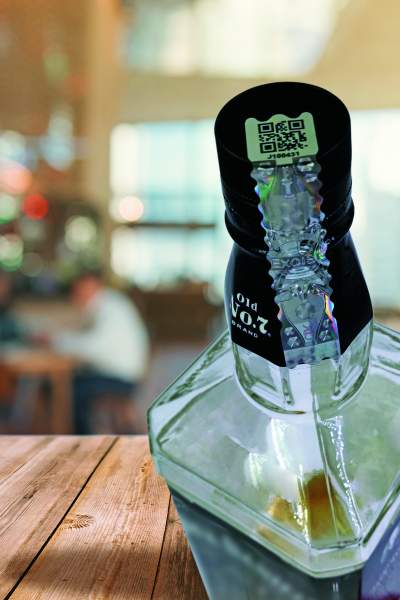 In India, Excise Department need to think about TAX Stamps as tool beyond tax collection tools. The existence of cheaper, less-sophisticated, less effective stamps and marks potentially dilute the value proposition around their use as platforms to implement the global guidelines. Instead of using it is a mere product, they need to reframe their work on their Tax Stamp Programme as an opportunity for consumer and industry empowerment.
In India, Excise Department need to think about TAX Stamps as tool beyond tax collection tools. The existence of cheaper, less-sophisticated, less effective stamps and marks potentially dilute the value proposition around their use as platforms to implement the global guidelines. Instead of using it is a mere product, they need to reframe their work on their Tax Stamp Programme as an opportunity for consumer and industry empowerment.
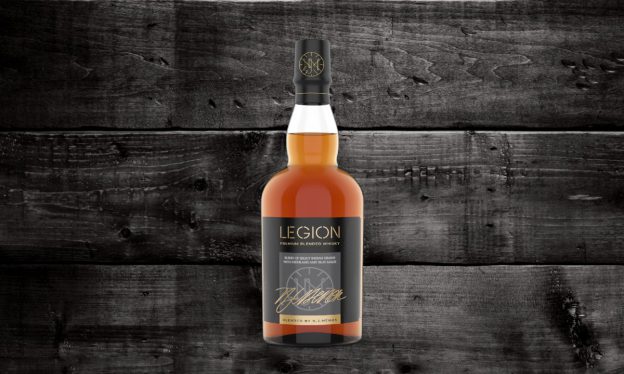
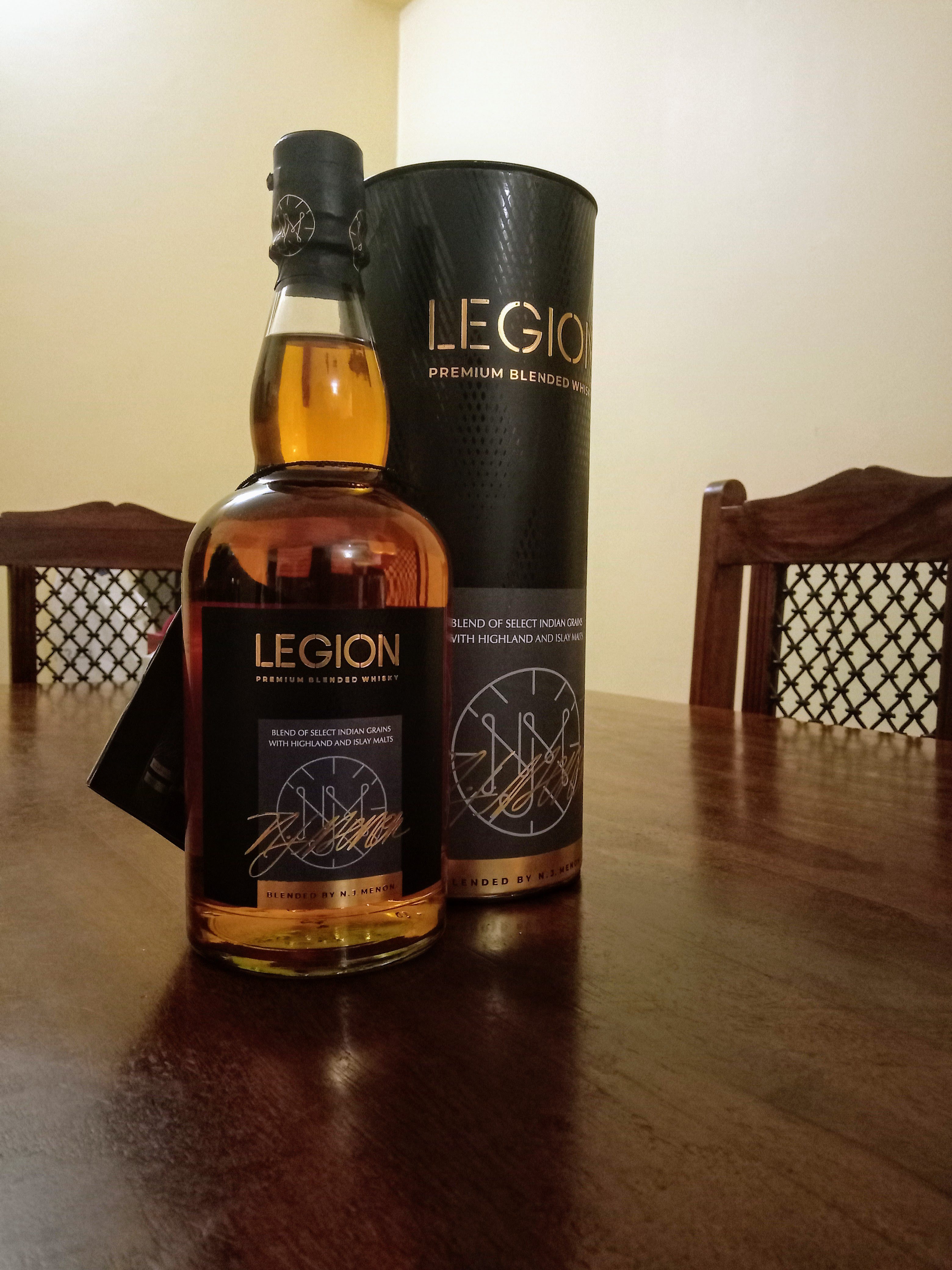 Perfection, precision and passion are among a few of the key attributes that that has truly shaped NJ Menon’s journey. In addition to the years of invaluable experience, training and learning through collaborations from around the world, NJM has amassed an unparalleled knowledge of brewing technology and blending craftsmanship. This exposure has allowed him to evolve his palate, producing unique blends for the Indian and international market.
Perfection, precision and passion are among a few of the key attributes that that has truly shaped NJ Menon’s journey. In addition to the years of invaluable experience, training and learning through collaborations from around the world, NJM has amassed an unparalleled knowledge of brewing technology and blending craftsmanship. This exposure has allowed him to evolve his palate, producing unique blends for the Indian and international market.
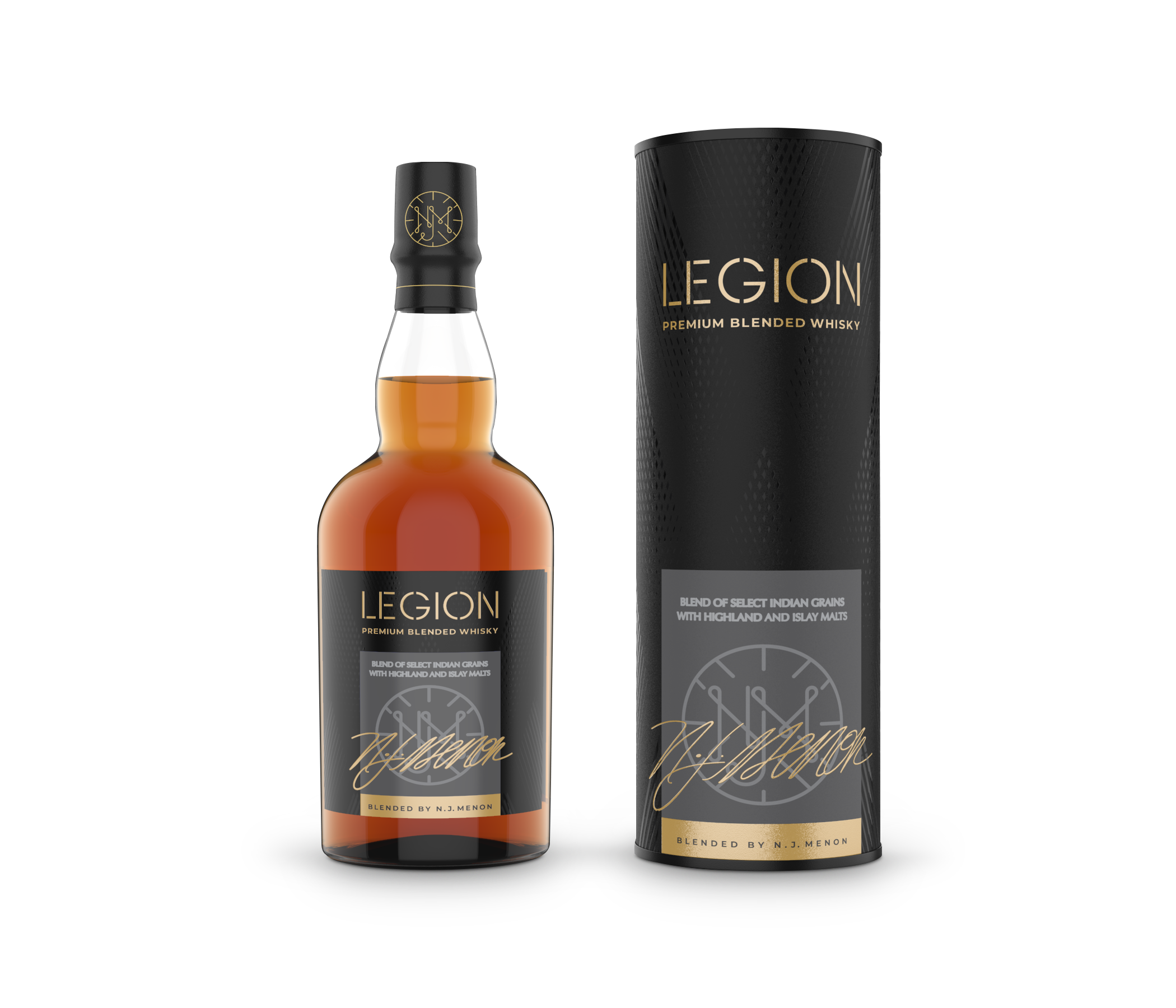 “After retirement in 1999, as a consultant, I developed a number of brands for various companies. Few of them became very popular and have now sold over a million cases. As a result, I was sought after by IMFL manufacturers.”
“After retirement in 1999, as a consultant, I developed a number of brands for various companies. Few of them became very popular and have now sold over a million cases. As a result, I was sought after by IMFL manufacturers.”
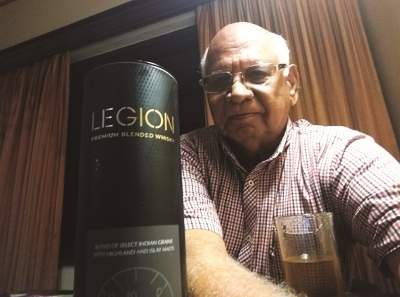
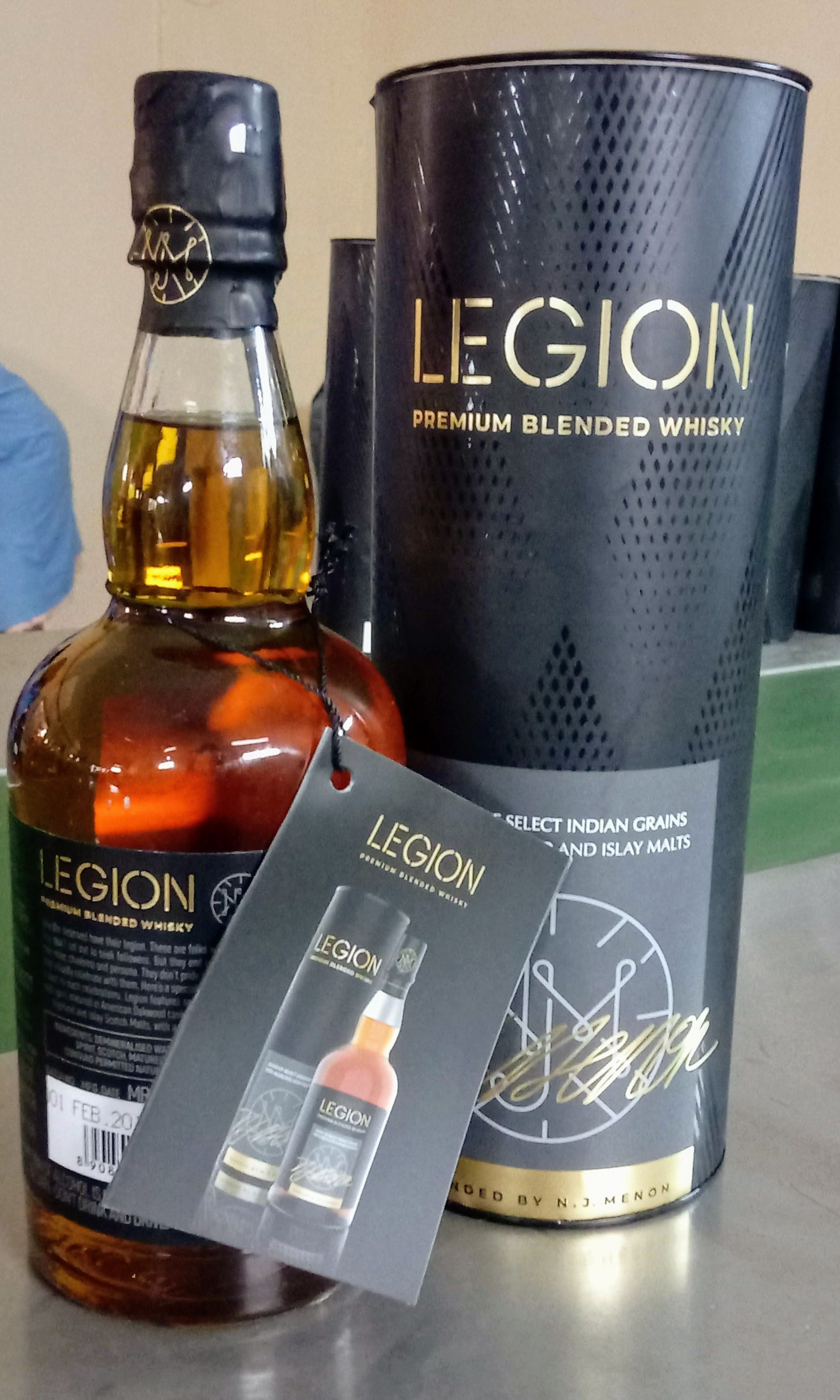 If you talk of the colour, too, Legion stands out with a strong golden-brown hue which is often seen only in leading Scotch brands.
If you talk of the colour, too, Legion stands out with a strong golden-brown hue which is often seen only in leading Scotch brands.

 Sales of spirits through e-commerce may not be as pronounced as wine, but IWSR research shows that around US$6.5b of spirits were sold online in 2018, a figure that represents 2% of all global spirits’ value sales. For example, ecommerce is reported to now be Pernod Ricard’s fastest growing channel.
Sales of spirits through e-commerce may not be as pronounced as wine, but IWSR research shows that around US$6.5b of spirits were sold online in 2018, a figure that represents 2% of all global spirits’ value sales. For example, ecommerce is reported to now be Pernod Ricard’s fastest growing channel.
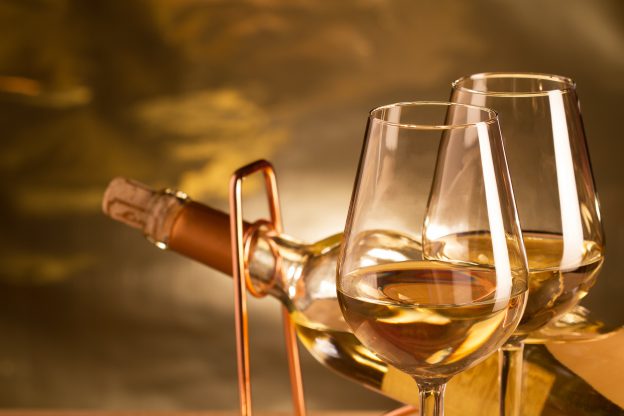

 d Japan, the category’s two largest markets. In Japan, most RTDs are locally made and almost exclusive to Japan. Their popularity is partly due to the fact that they are relatively dry, which makes them more food-friendly and sessionable. In the US, the popularity of alcohol seltzers has been a tremendous engine for growth in the RTD market. In the cider category, as investment levels in those products continue to rise, almost 270m cases are expected by 2023, a 2.0% CAGR 2018-2023. Both of those categories (mixed drinks and cider) are taking share from beer as perceived accessibility increases (less bitter, easier to drink).
d Japan, the category’s two largest markets. In Japan, most RTDs are locally made and almost exclusive to Japan. Their popularity is partly due to the fact that they are relatively dry, which makes them more food-friendly and sessionable. In the US, the popularity of alcohol seltzers has been a tremendous engine for growth in the RTD market. In the cider category, as investment levels in those products continue to rise, almost 270m cases are expected by 2023, a 2.0% CAGR 2018-2023. Both of those categories (mixed drinks and cider) are taking share from beer as perceived accessibility increases (less bitter, easier to drink).
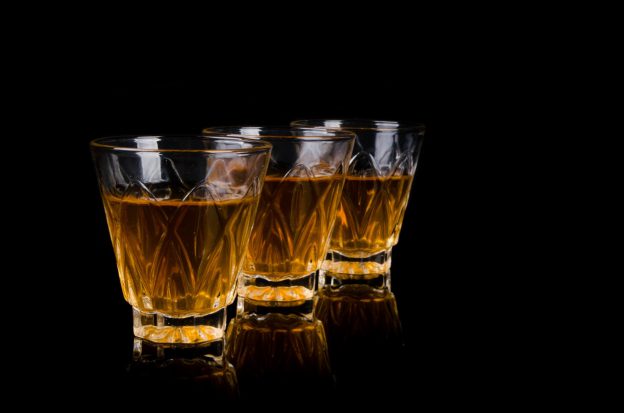
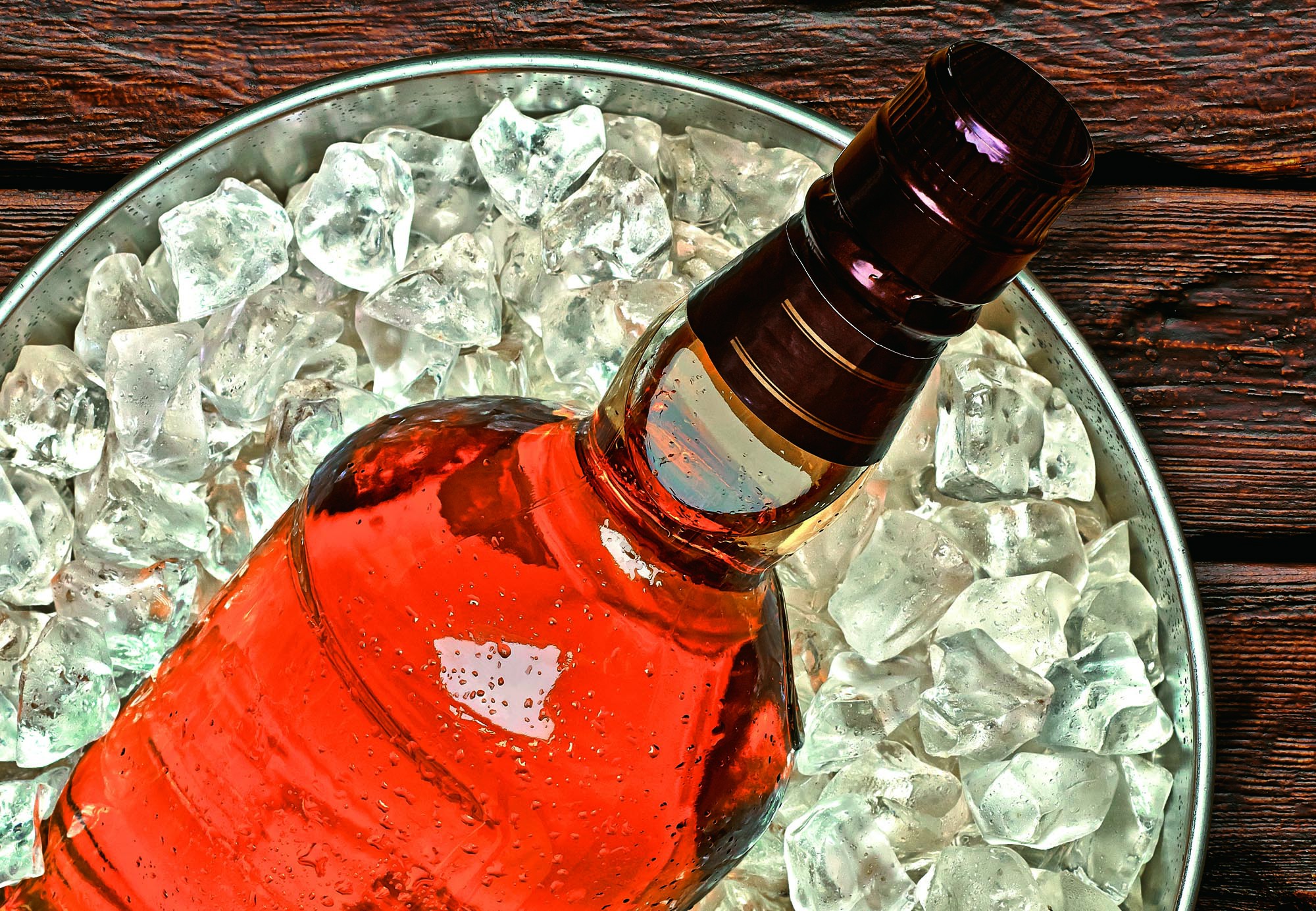 sign that the Scotch Whisky industry remains confident about the future. This is great news for our many employees, our investors, supply chain and, of course, for our consumers all over the world, who love Scotch.
“This report also highlights the high rate of domestic tax that Scotch Whisky faces in the UK. In the US, Scotch and other whiskies are taxed at just 27% of the rate that HM Treasury taxes us here at home. We will continue to press the Chancellor for fairer treatment of Scotch Whisky in our domestic market, which reflects the vital economic contribution the thousands of people who work in whisky make to the UK economy every day.”
sign that the Scotch Whisky industry remains confident about the future. This is great news for our many employees, our investors, supply chain and, of course, for our consumers all over the world, who love Scotch.
“This report also highlights the high rate of domestic tax that Scotch Whisky faces in the UK. In the US, Scotch and other whiskies are taxed at just 27% of the rate that HM Treasury taxes us here at home. We will continue to press the Chancellor for fairer treatment of Scotch Whisky in our domestic market, which reflects the vital economic contribution the thousands of people who work in whisky make to the UK economy every day.”
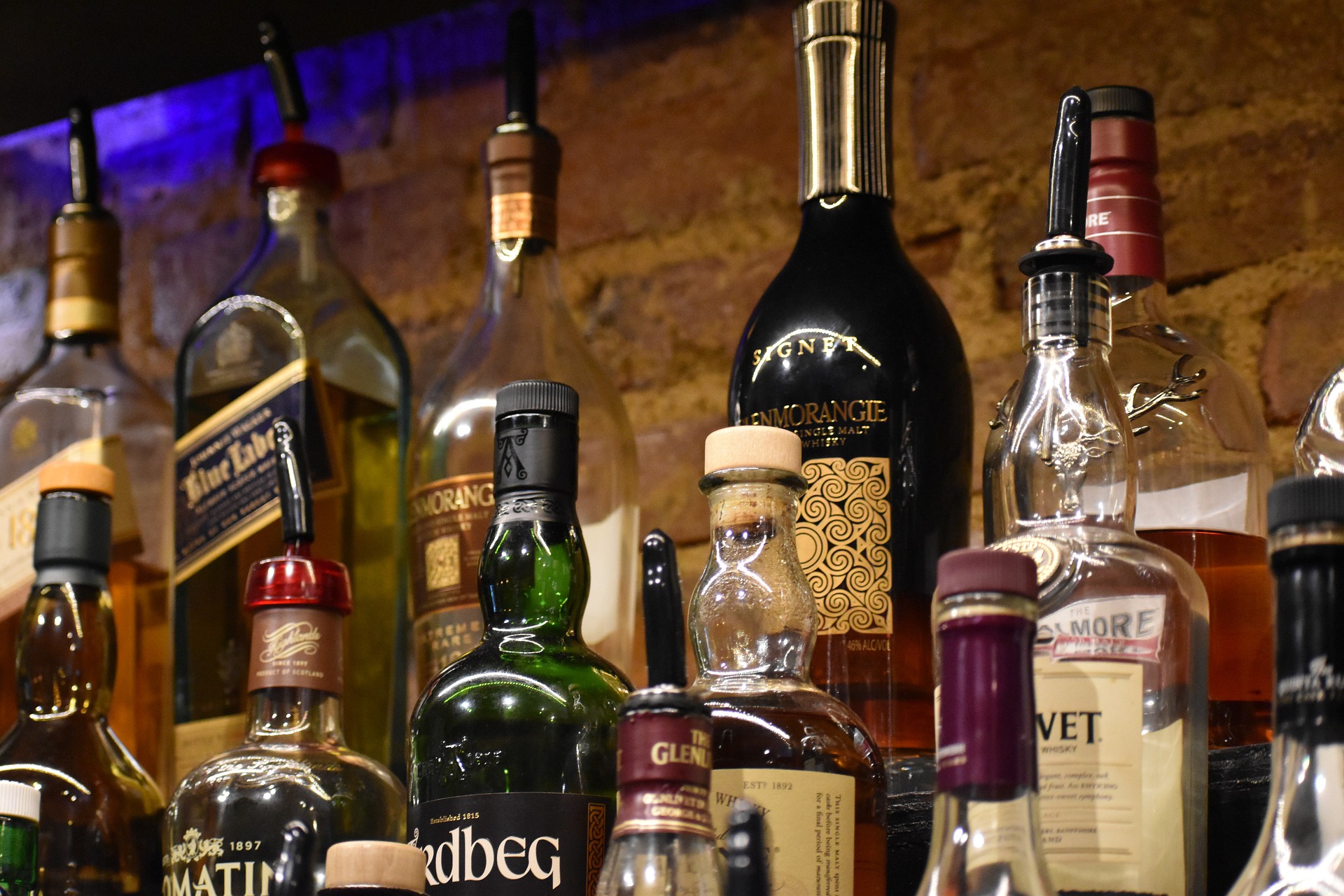 contributes more than double than life sciences (£1.5bn) to the Scottish economy, supporting more than 42,000 jobs across the UK, including 10,500 people directly in Scotland, and 7,000 in rural communities.
contributes more than double than life sciences (£1.5bn) to the Scottish economy, supporting more than 42,000 jobs across the UK, including 10,500 people directly in Scotland, and 7,000 in rural communities.
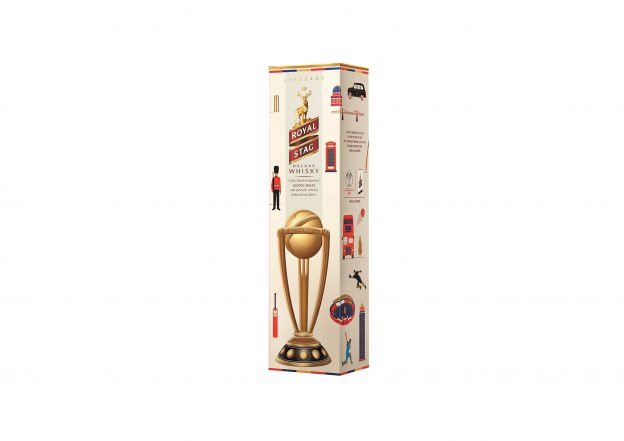
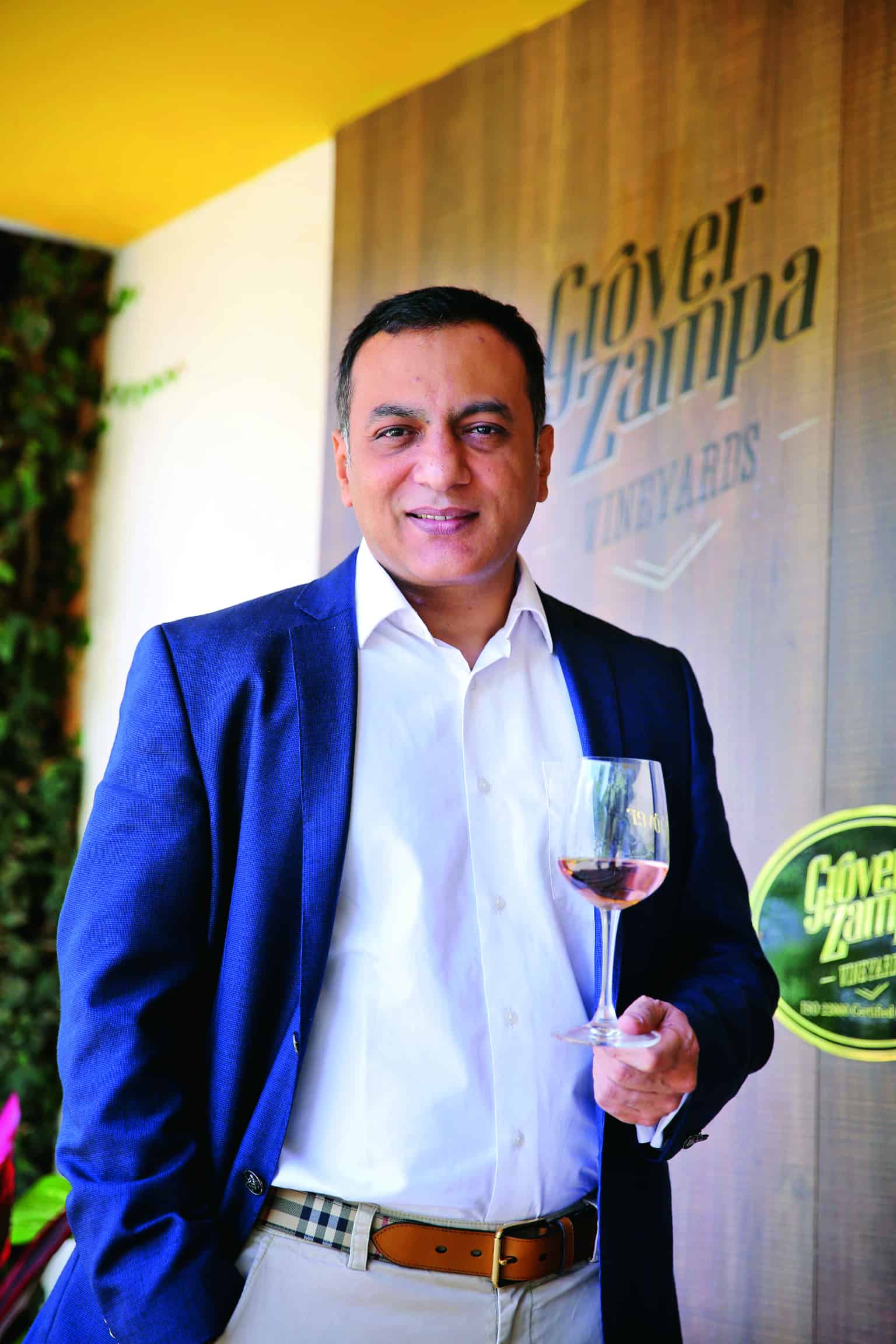 With the addition of Four Seasons, Charosa and Myra, we aim to expand into a multi-brand lifestyle label with wine being at the core of our business. We are looking to widen the portfolio and offer more varietals that resonate with the millennials and new age wine drinkers. This will also lead to an increased focus on wine tourism with better amenities being offered to patrons at the vineyards, thereby consolidating the position as a market leader in the country.
With the addition of Four Seasons, Charosa and Myra, we aim to expand into a multi-brand lifestyle label with wine being at the core of our business. We are looking to widen the portfolio and offer more varietals that resonate with the millennials and new age wine drinkers. This will also lead to an increased focus on wine tourism with better amenities being offered to patrons at the vineyards, thereby consolidating the position as a market leader in the country.
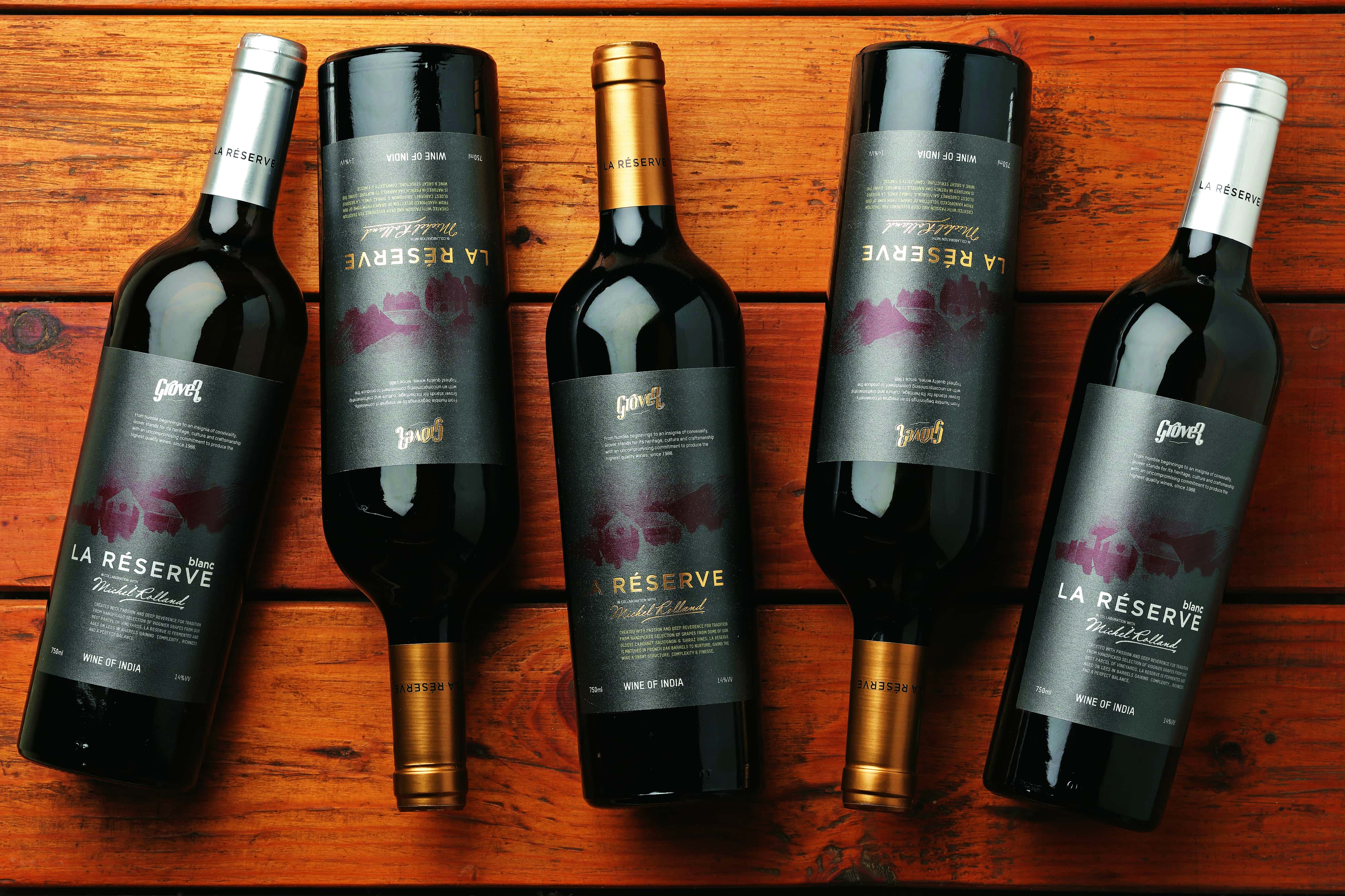 amohan, CEO, Grover Zampa Vineyards opined, “We take pride in the toil and passion that form key ingredients of the wines being produced here at Grover Zampa Vineyards. The acknowledgment and awards won at the Indian Wine Awards, 2018, redefine the brand’s unwavering fortitude and zeal to please patrons with the best in wine always. These wins not only re-instil our faith in our capabilities and commitment, but also motivate us further to set newer benchmarks.”
amohan, CEO, Grover Zampa Vineyards opined, “We take pride in the toil and passion that form key ingredients of the wines being produced here at Grover Zampa Vineyards. The acknowledgment and awards won at the Indian Wine Awards, 2018, redefine the brand’s unwavering fortitude and zeal to please patrons with the best in wine always. These wins not only re-instil our faith in our capabilities and commitment, but also motivate us further to set newer benchmarks.”
